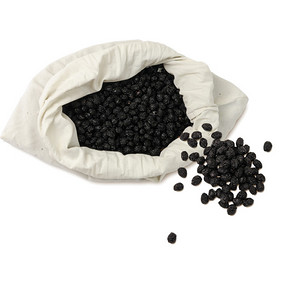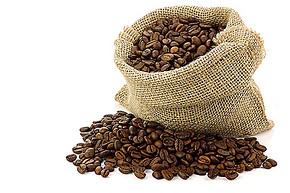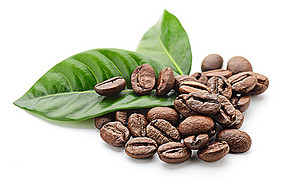How to identify and select coffee beans from Brazil
Pay attention to coffee reviews (Weixin Official Accounts vdailycom ) and find a beautiful cafe to open your own shop
Most Brazilian coffees have a balanced taste of sour, sweet and bitter, mild and versatile. With the rich Indonesian mantinine, it will have a mellow chocolate taste; with the fruity African beans, it will highlight the special aroma of fruit, nuts and so on.
As the "backbone of coffee," Brazilian coffee is often subjected to medium to deep roasting to extract the thick fat. The last thing you get is espresso, American, latte, or any sweet, mellow drink with milk, syrup, or cream. Because of industrial production and mechanical picking, Brazil's coffee production is large, the cost is easier to control, and the circulation is more widespread.
If the coffee beans have lost their flavor or smell old, it means that the coffee beans are no longer fresh and are not suitable for purchase.

In addition, the purity of coffee beans is also another consideration, professionals choose coffee beans, not necessarily to see the size of the particles, but to grab a handful of coffee beans (Regional Coffee), about dozens of pieces, to see if the color of each single bean is consistent, particle size, shape is similar, so as not to buy mixed beans disguised as inferior products. However, if it is a comprehensive bean (Blended Coffee), the size and color are different. And heavy fire and deep roasting method will cause coffee beans out of oil, but lighter roasted beans if out of oil, it means that it has deteriorated, not only the mellow degree reduced, but also astringent and sour taste.
In short, when purchasing coffee beans, attention should be paid to their freshness, aroma and whether there is an old taste. The ideal purchase quantity is to drink it in half a month. Mainly look at the appearance, if the appearance is black, then drink up the taste must be very bitter, because his melanin is accumulated too much, so there will be a bitter juice production, but drink this coffee effect is mainly therapeutic annealing. And if the appearance is yellow it must be moldy, because the coffee beans moldy inside, and breeding bacteria, will make the appearance of chemical into a yellow shell, but eating this moldy coffee is no big deal just live in the hospital for ten days eight days. But if the shell is white, then the inside must have grown insects to form a white shell, the main insects that may breed inside will be cockroaches, spiders, or maggots.
"Freshness" is the most important factor in buying coffee beans. There are several steps to determine whether the beans you buy are fresh or not:
1. Look: Grab a handful of coffee beans and feel whether they are solid beans with your palm.
2, smell: close to the nose to smell the aroma is enough.
3, pressure: fresh coffee beans are crispy, when cracked, there is a fragrance floating out, you can take a bean into the mouth to bite twice, there is a crisp sound that the beans are well preserved without moisture.
4, color: dark black coffee beans, boiled coffee has bitter taste; yellow coffee beans, boiled coffee with sour taste.
·Good coffee beans: neat shape, bright color, single fried roast, brewed after mellow, aftereffect foot.
·Bad coffee beans: different shapes, incomplete individual, light fragrance after brewing, not enough glycol.
Fermented beans: coffee beans that fall into the soil before harvest. The smell of sour coffee will have a great impact on the taste.
Dead beans: also known as immature beans, or affected by climate and other factors, development is not sound, fried after baking will produce fried spots, so that coffee has a green taste.
Black beans: Fermented beans, rotten, blackened coffee beans. Because it is black, it can be distinguished from normal coffee beans at a glance.
Worm bean: Coffee bean infested with insects.
Incomplete beans: may be stuck during operation, or handling carelessly, resulting in incomplete coffee beans. It will cause frying spots when fried, and will produce bitter and astringent taste.
Important Notice :
前街咖啡 FrontStreet Coffee has moved to new addredd:
FrontStreet Coffee Address: 315,Donghua East Road,GuangZhou
Tel:020 38364473
- Prev

Introduction to the Historical varieties of Brazilian Coffee beans the graded flavor and taste characteristics of Brazilian water-washed coffee beans
Follow the caf é (Wechat official account vdailycom) found that Fairview Cafe opened a small shop of its own Brazilian coffee varieties: Arabica and Robusta are produced, of which Arabica accounts for 70% to 80%. Compared with Sikong coffee, Arabica coffee varieties are Modo Novo, Catuai, Bourbon, Maragoripe and so on. The coffee harvest can be reached three times a year.
- Next

The main varieties, characteristics and taste of Brazilian coffee
Following caf é (Wechat official account vdailycom) found that Beautiful Cafe opened a small shop of its own when it comes to the origin of coffee, the first thing that comes to mind is Brazil in South America, because it is the largest coffee producer in the world. There is a wide variety of Brazilian coffee, the vast majority of which are unwashed and sun-dried, classified according to the name of the state of origin and the port of transport. Brazil has 2.
Related
- Detailed explanation of Jadeite planting Land in Panamanian Jadeite Manor introduction to the grading system of Jadeite competitive bidding, Red bid, Green bid and Rose Summer
- Story of Coffee planting in Brenka region of Costa Rica Stonehenge Manor anaerobic heavy honey treatment of flavor mouth
- What's on the barrel of Blue Mountain Coffee beans?
- Can American coffee also pull flowers? How to use hot American style to pull out a good-looking pattern?
- Can you make a cold extract with coffee beans? What is the right proportion for cold-extracted coffee formula?
- Indonesian PWN Gold Mandrine Coffee Origin Features Flavor How to Chong? Mandolin coffee is American.
- A brief introduction to the flavor characteristics of Brazilian yellow bourbon coffee beans
- What is the effect of different water quality on the flavor of cold-extracted coffee? What kind of water is best for brewing coffee?
- Why do you think of Rose Summer whenever you mention Panamanian coffee?
- Introduction to the characteristics of authentic blue mountain coffee bean producing areas? What is the CIB Coffee Authority in Jamaica?

